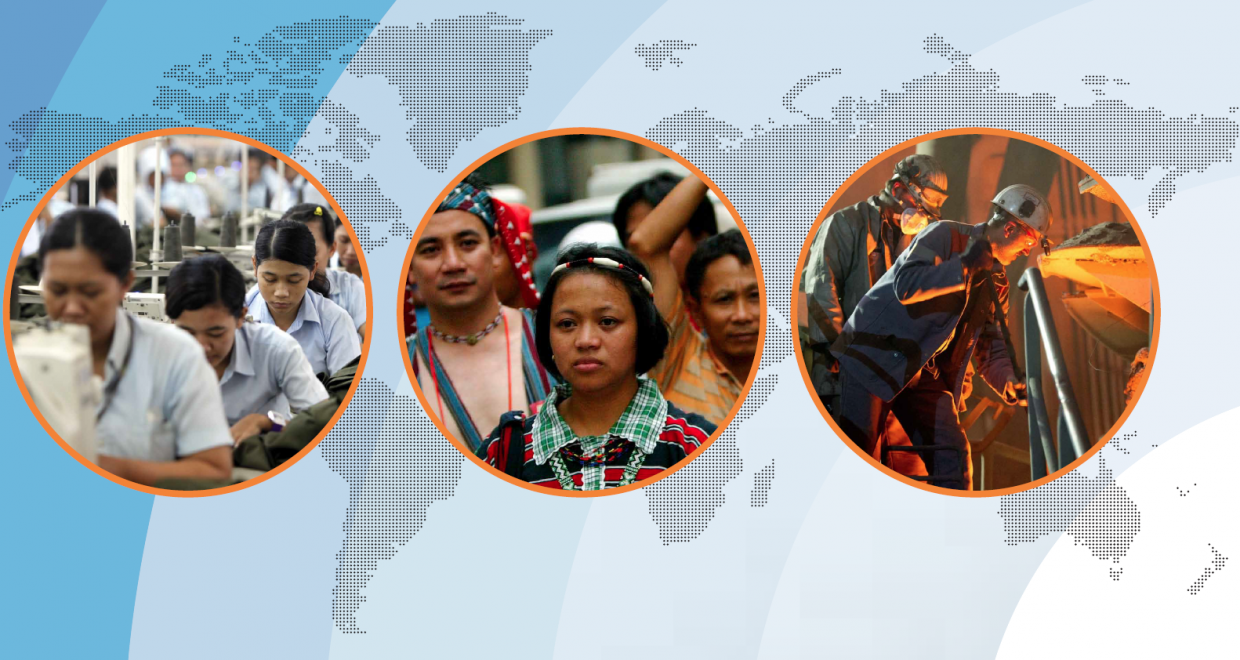Remedy to Children Toiling in Global Supply Chains
The only daughter in a family of poor farmers, 10-year-old Nirmala was desperate enough to run away to the city to seek work. Two years later, a GoodWeave inspector found her in Kathmandu, weaving a carpet for export to a U.S. company. She had never received payment for her long hours of toil.
What happened next is the reason I write this blog. Having identified a trafficking case, our inspectors followed protocol, ended their inspection and changed to child protection mode. Within minutes they removed Nirmala from the workplace. They brought her to our transit home for rescued children, where she received medical and emotional support, and the effort to identify her family began. Our social worker, Rajendra, remembers her first days at the center; “We were focused on making her laugh and play. And slowly, she started coming back to normal.” Today, Nirmala is 17 and attends 10th grade at the Laboratory School, a top private school in Kathmandu. She has been reunited with her family.
Nirmala’s story shows us what successful remedy to children can look like. The key is to respond to child labor and trafficking cases in real-time, and to follow tested, legal guidelines to help the victim separate from exploitative circumstances without exposure to danger or risk. This intervention must be followed with services that help them to recover, and to remain protected from exploitation going forward.
Yet most supply chain auditing programs never reach children like Nirmala. And if they do, then the protocol is usually to issue a “corrective action report” requiring the employer to resolve the issue. More specifically, efforts to audit production and account for worker legitimacy and welfare are limited to factories. Meanwhile, most exploitation is in the sub-contracted tiers of labor down to homeworkers – it is in these often-hidden locations that GoodWeave has found 90% of its child labor cases. In India more than 80% of non-agricultural workers are classified as informal, meaning they aren’t typically protected under national labor laws or corporate compliance codes: a barrier to ensuring remedy to children and all workers, as well as a gap in services between existing programs and their shortfall in reaching victims. When we do access this part of the supply chain, the real impact can begin to take hold.
The other half of the successful equation in delivering remedy, is for companies to adopt actionable remediation policies and strategies, partner with local NGOs, and train their compliance staff to deploy appropriate responses to specific geographies and incidents. Whether a company uses one or some combination of internal auditing, third-party auditing, or certifications, having a proper mapping and verification process combined with remedy can be the difference between complying with the law and solving the root causes of child labor. Yet compliance and impact for children are rarely one in the same. A comprehensive program will be country-specific and sensitive to the local context. It must include: 1) Removal of children from the work place (as appropriate to the situation); 2) Counselling and care; 3) Advocacy of child rights; 4) Education; 5) Rehabilitation into community/family; 6) Ongoing support; 7) Follow up and tracking; and 8) Prevention through awareness raising and community-based interventions.
Once a company has these resources in place internally or through partnerships, then there is no question of what to do when a child is found working. From that moment forward the best interests of the child prevail. GoodWeave’s Forced, Bonded, and Child Labour Remediation Policy is an example of an effective protocol. This is a rights-based framework following the UN Convention on the Rights of the Child (UNCRC) and the conventions of the International Labour Organization (ILO). The goal is to achieve rehabilitation and social reintegration, with clear definitions of what this means at every step. This is do-able. GoodWeave alone has helped companies operating in India, Nepal and Afghanistan to achieve remedy for some 4,000 children. In addition to now covering 10% of the global rug market, GoodWeave is working with C&A , Monsoon and others to pilot its model in their garment and textiles supply chains in northern India. As a result, thousands of children have come under the protection of comprehensive programming. Their rescues would not have succeeded if a call needed to be made first, or if some chain of approval took priority. You cannot delay action, and these children cannot access remedy on their own. Aid must come in the moment, on the ground, within the community.

For Nirmala, had our inspectors left and come back for her the next day, she very likely would have been trafficked to another, perhaps worse situation. In a recent interview she told us that she is writing the story of her childhood, and that she hopes that what happened to her never repeats in anyone’s life. She started her memoir in a journal we gave to her. On the first page she wrote, “My True Story Begins Now.” Not only is Nirmala able to write those words because of the remedy she was offered, but to her, life started in that moment. Were every company to adopt comprehensive child protection strategies and enforcement plans, Nirmala’s wish for all children could very well come true.
Nina Smith is the CEO of GoodWeave International, which works to end child labor in global supply chains, from the producer’s hands to the consumer’s.






